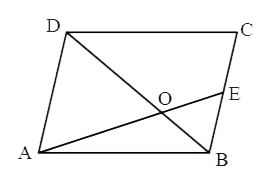To divide a line segment in a given ratio.
The correct Answer is:∴PRRQ=32
Step by step video, text & image solution for To divide a line segment in a given ratio. by Maths experts to help you in doubts & scoring excellent marks in Class 10 exams.
Updated on:21/07/2023Topper's Solved these Questions
- GEOMETRIC CONSTRUCTIONSBOOK - TARGET PUBLICATIONCHAPTER - GEOMETRIC CONSTRUCTIONSEXERCISE - PRACTICE SET 4.1
4 Videos
- GEOMETRIC CONSTRUCTIONSBOOK - TARGET PUBLICATIONCHAPTER - GEOMETRIC CONSTRUCTIONSEXERCISE - PRACTICE SET 4.2
1 Videos
- FINANCIAL PLANNING BOOK - TARGET PUBLICATIONCHAPTER - FINANCIAL PLANNING EXERCISE - Chapter Assement
14 Videos
- LINEAR EQUATIONS IN TWO VARIABLES BOOK - TARGET PUBLICATIONCHAPTER - LINEAR EQUATIONS IN TWO VARIABLES EXERCISE - Chapter Assessment
20 Videos
Similar Questions
Knowledge Check
If the extremities of a line segment of length l moves in two fixed perpendicular straight lines, then the locus of the point which divides this line segment in the ratio 1 : 2 is-
Aa parabolaBan ellipseCa hyperbolaDNone of theseThe point which divides the line segment joining the points (7,-6) and (3,4) in ratio 1:2 internally lies in the
AI quadrantBII quadrantCIII quadrantDIv quadrantThe point which divides the line segment joining the points (8,–9) and (2,3) in ratio 1 : 2 internally lies in the
AI quadrantBII quadrantCIII quadrantDIV quadrant
Fill in the blanks/tables with suitable information:
In the given figure, P divides the line segment AB in the ratio ____________

View SolutionIn the given figure, ABCD is a parallelogram. AE divides the line segment BD in the ratio 1 : 2. If BE = 1.5 cm find BC.

View SolutionDivide a line segment AB in the ratio 3:7, What is the minimum number of points marked on a ray AX at equal distances?
View SolutionThe point which divides the line segment joining the points A(0, 5) and B(5, 0) internally in the ratio 2:3 is __________
View SolutionFind the ratio in which the y-axis divides the line segment joining the points (5,−6)and(−1,−4).
View Solution
